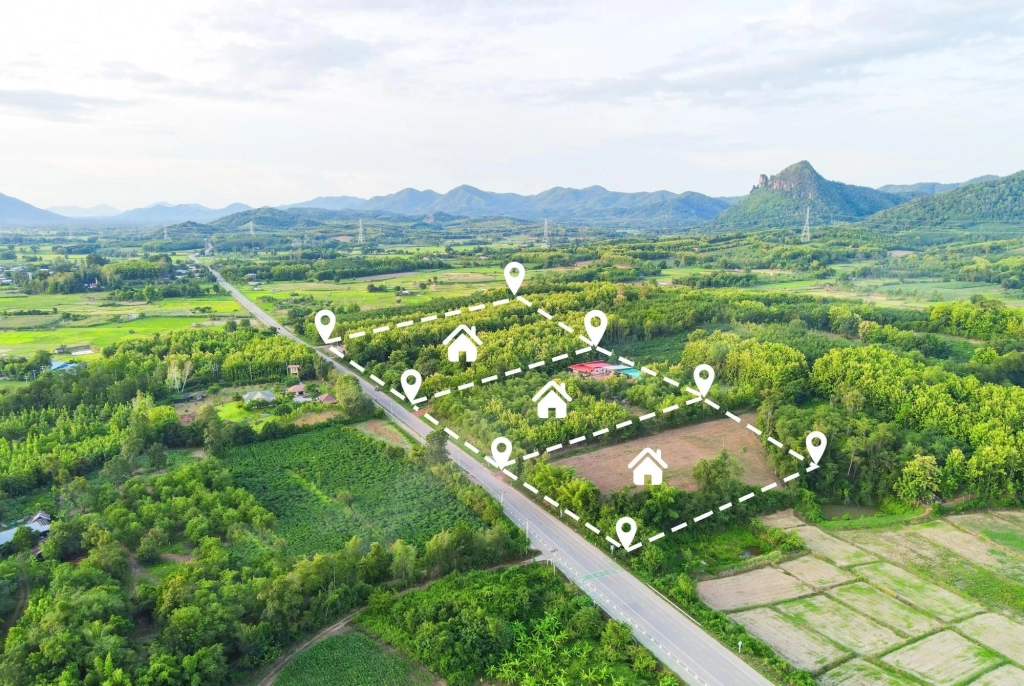5 Reasons Why Agri-Tourism Estates are Skyrocketing in the Philippines

Agri-Tourism Estates in the Philippines are a testament to the nation’s innovative approach to sustainable agriculture and tourism. Here’s a deep dive into the reasons, the benefits, and what you can expect when visiting.
RELATED: Urban Redevelopment: Breathing New Life into Old City Centers
Agri-Tourism Estates on the Rise in the Philippines
The Philippines, known for its stunning beaches and vibrant festivals, is now catching the world’s attention with another attraction: Agri-Tourism Estates. This unique blend of agriculture and tourism has been a game-changer, offering a fresh perspective on vacationing. But what’s driving this trend?
Origins and Evolution
The foundation of Agri-Tourism in the Philippines lies in its rich agricultural heritage. Local farmers, in a bid to diversify their income, began opening their gates to tourists. The idea? Offer genuine farm experiences to visitors, ranging from planting rice and picking fresh fruits to understanding the intricacies of organic farming. This simple concept soon evolved into a full-blown trend with estates sprouting across the archipelago.
Why They’re Gaining Popularity
Educational Experience: Beyond the beaches and city tours, these estates offer tourists a chance to understand the backbone of the country: its agriculture. A trip to one of these estates is not just leisure; it’s an immersive educational experience.
Economic Growth: With more visitors, farmers and locals get a more considerable chunk of tourism revenue. This direct transaction eliminates middlemen, ensuring more profits for small-scale farmers.
Promotion of Sustainable Practices: These estates aren’t just about showing farms. They’re platforms that promote sustainable and organic farming practices, which tourists often take back home, spreading the message further.
What to Expect When Visiting
Imagine waking up to the crowing of roosters, walking through dew-laden fields, and plucking your own fruits for breakfast. Agri-Tourism Estates provide a stark yet welcome contrast to the usual beach resorts or city hotels. Apart from farming activities, many estates offer horseback riding, nature walks, and even spa services. Foodies can revel in farm-to-table dining experiences where every dish is made from freshly harvested produce.

The Future of Agri-Tourism in the Philippines
The rise in popularity has caught the government’s attention. Recognizing its potential, local authorities are now providing incentives and support to farmers to develop Agri-Tourism. With more technological and financial resources funneling in, the future looks promising for both farmers and tourists.
Benefits to the Local Community
Agri-Tourism is more than just an attraction for tourists; it’s a lifeline for local communities.
Economic Upliftment
Farmers have found a sustainable way to increase their income. Furthermore, with tourists frequenting rural areas, other local businesses like eateries, handicraft shops, and transport services also see a surge in revenue.
Preservation of Tradition
By opening their farms to visitors, older generations have a platform to pass down traditional farming techniques and local stories, ensuring they don’t fade into oblivion.
Promotion of Eco-Tourism
Over-tourism in popular spots often harms the environment. By diverting tourists to rural areas, there’s a more even distribution, reducing the pressure on frequently visited spots.
The Role of the Philippine Government
The transition from traditional farms to Agri-Tourism Estates isn’t merely spontaneous. The Philippine government’s strategic interventions have catalyzed this transformation.
Policy Formulation
Specific guidelines have been set to ensure the sustainability and authenticity of the Agri-Tourism experience. These policies range from safety standards to providing incentives for farmers.
Infrastructure Development
Local governments are actively working to improve connectivity and facilities. Better roads, more transportation options, and upgraded amenities make these estates more accessible and comfortable for visitors.
How to Plan Your Visit
Eager to plan your Agri-Tourism escapade? Here’s how.
Best Time to Visit
While these estates are open year-round, the best time is during harvest seasons, when you can see the farms in full swing.
Things to Pack
A mix of comfort and utility is key. Sturdy shoes for farm walks, hats and sunglasses for the afternoon sun, and of course, a camera to capture the memories.
The burgeoning trend of Agri-Tourism Estates in the Philippines showcases the country’s ingenious ways of promoting sustainability, tradition, and tourism. These estates, with their promise of authentic experiences, are rapidly becoming a must-visit. So, as the sun rises over a Philippine paddy field, when will you be there to witness it?
FAQs
Why are Agri-Tourism Estates becoming popular in the Philippines?
They offer a unique combination of relaxation, education, and a genuine taste of Filipino rural life.
What activities can I expect at an Agri-Tourism Estate?
Farm activities, nature walks, farm-to-table dining, and cultural storytelling sessions, among others.
Is it expensive to visit these estates?
Prices vary, but there’s something for every budget, from luxurious stays to rustic farm lodges.
Do I need to book in advance?
Yes, especially during harvest seasons and local festivals.
Are these estates child-friendly?
Absolutely. Kids love the open spaces, animals, and the novelty of farm activities.
How can I support the local community during my visit?
Purchase local products, eat at local eateries, and respect the traditions and guidelines set by the community.
Read more here: AllProperties Latest Blogs




